I, though very late, have come to realise, in its true sense, that visiting new places have definite impact on mind and body. And when the destination is a Sanskrit language university of a formerly princely state of British India; the thrill, the vibes and the lessons permeating through, are extraordinary. yes, I am talking about my visit to Kameshwar Singh Darbhanga Sanskrit University, at Darbhanga in state of Bihar in India.
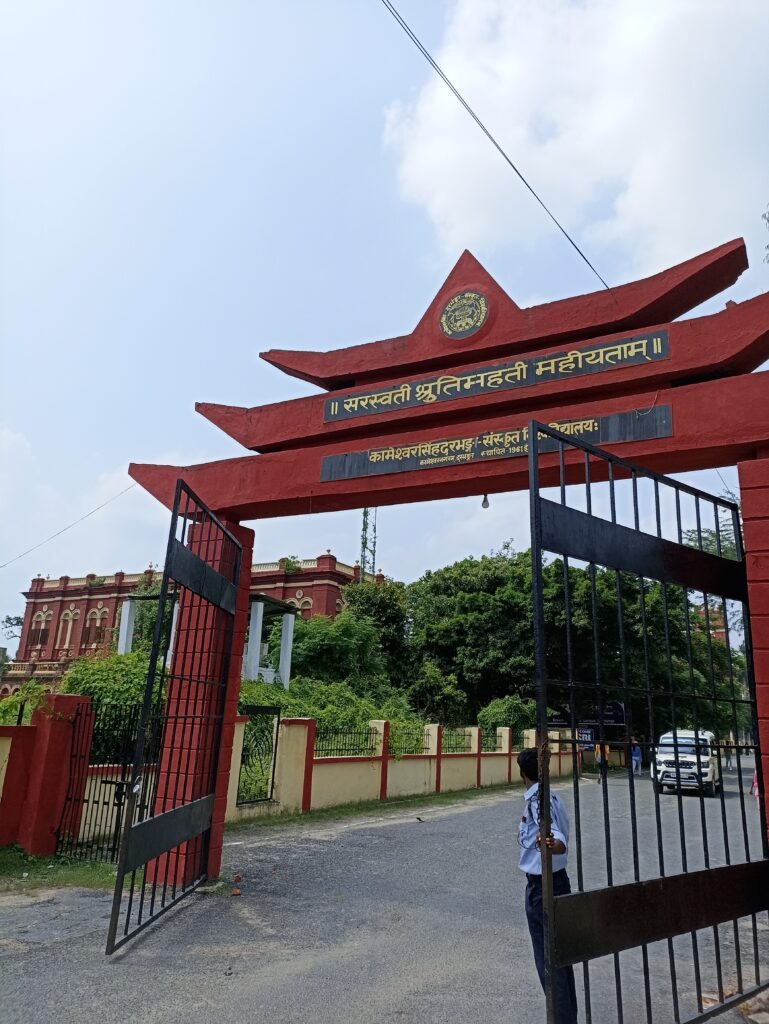
An Unplanned Visit To Kameshwar Singh Darbhanga University Campus.
Actually the visit to Kameshwar Singh Darbhanga University Campus was not a planned one.
My mother was returning from Delhi, and her flight was scheduled to land at Darbhanga airport at 1.00 p.m. on 16th August,2023. And since we are not native of Darbhanga and live some 150km away eastward, I with my 15 year old son set out for Darbhanga in our SUV vehicle. We reached Darbhanga some one hour before, to receive my mother.
No sooner had I messaged on our family WhatsApp group about our arrival at Darbhanga, than rang my phone. It was my younger brother from Delhi, accompanying my mother. He informed me that flight was yet to takeoff from Delhi due to some technical snag developed in its air conditioning system. And, that, it had been sorted out lately, and the aircraft was ready to fly.
Oh God ! That meant we had to spend some two hours in Darbhanga and that too when the weather was oppressively hot and the Sun was scorching on this day of August month.
Then suddenly the idea sparked in mind to visit this Kameshwar Singh Darbhanga University Campus and spend our time in a productive way. My son who is about to finish his school years, this year, and had never seen any university before , became very much interested in visiting and seeing a university for the first time!
Entering The Kameshwar Singh Darbhanga University Campus: Entering A Different Era!
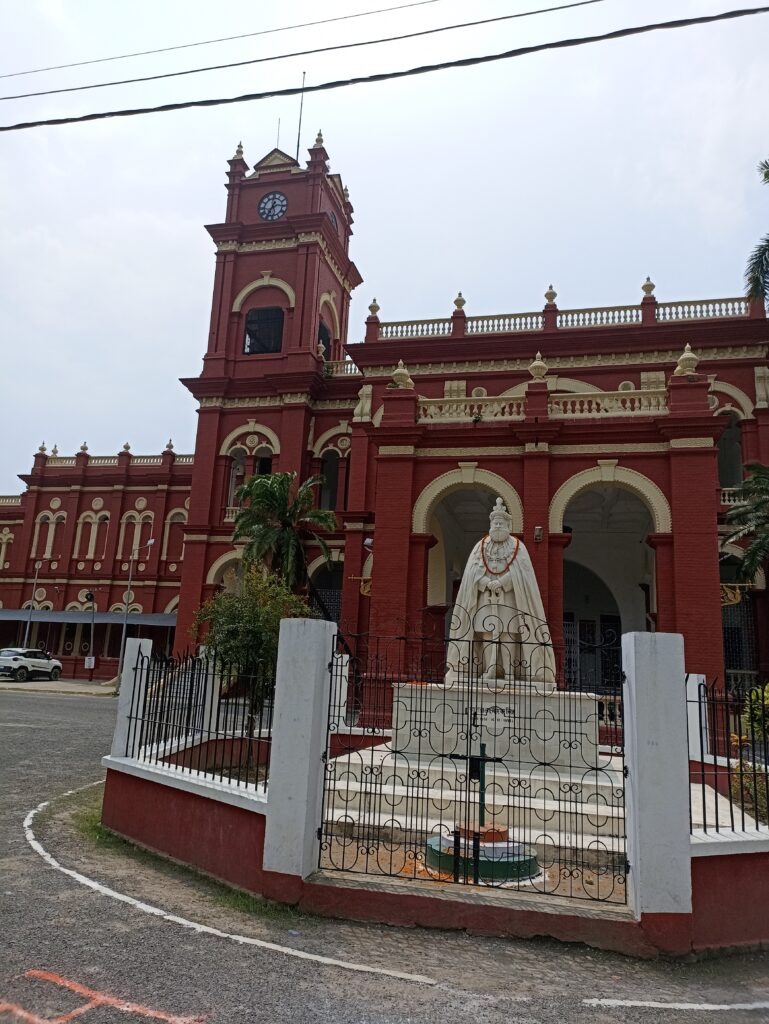
My son’s excitement further added value to my plan, which proved an eye opener to me also. We entered the campus and a different world of past was unfolding before us with all its testimonies that were so vivid and beckoning.
We became breathlessly busy with our mobile phone cameras in capturing the scenic views lying all over.
But the handmade baked soft red bricks, magnificent pillars, staircases, gorgeous doors and windows of the university building, said in volumes about the antiquity and royalty of those times. Arrangement of beautiful gardens, open spaces and big lakes appeared to be complementing this marvelous architectural landscape. And all these were suggesting to take a dip in their glorious past, in their history, that was the Estate of Darbhanga, popularly known as Raj Darbhanga, the royal, the incredible!



Darbhanga Kings, And Their Love For Education, Architecture, Culture And Philanthropy.
A toiling research from various sources about brief history of Darbhanga Raj, reveals that it was founded by Mahamahopadhyay Mahesh Thakur, who received the Darbhanga Raj from Akbar in early 16th century.
During British time it encompassed 6,200 sq. km. area incorporating 4,495 villages within 18 circles of Bihar and Bengal. It was the biggest zamindari in India. With its 7,500 employees, it was the best managed estate in India till the end of colonial era.
Darbhanga earned the name of cultural capital. The Maharajas(kings) of Darbhanga were great patron of education art, culture and architecture. They expended extravagantly in development of education and infrastructure.
They contributed heavily by donating palatial buildings (Often named Darbhanga House) and also in cash, to the universities like Banaras Hindu University, Aligarh Muslim University, Patna University, and Calcutta University. Sketches of design of Kameshwar Singh Darbhanga Sanskrit University ( Originally Lakshmi Vilas Palace) were published in the illustrated newspapers of London during late1930s. The famous Nargona Palace (known for its grandeur and earthquake resistant design) has been donated to Mithila University.
My eyes went dilated with surprise when I came to know that all major cities of colonial India like New Delhi, Calcutta, Mumbai, Shimla, Darjeeling, Patna and Ranchi had royal properties (Darbhanga Houses, Darbhanga Mansions, Navlakha palaces) of this Estate.
The kings of Darbhanga donated land to the Tirhut Rail Company to start Railways in the Estate. They gifted three air planes to air force during second world war. Besides the estate had its own private aircrafts.
They also built two museums at Darbhanga. European Library of Mithila University, and Official Library of Kameshwar Singh Darbhanga Sanskrit University are said to be the rich source for study of Epic, Philosophy, Vyakaran, Dharma Shastras and Metaphysics.
Those Great Kings of Darbhanga!
I sometime get baffled, when I think why now with all technical advancement and funding and with all democratic attributes of modern state, our system is not as efficient as it used to be earlier. Quality and performance of public works in many parts of India often gets compromised due to rampant corruption at lower level and incompetent leadership at the top. Raj Darbhanga and works of its kings may show you the path.
These kings were great visionary and worked ruthlessly for betterment of their subjects and estate within the constraints of colonial setup. They had will power so they became successful in their endeavor.
Many titles like Maharajadhiraj, Sir, Bahadur, Knight Commander of Indian Imperialism, Knight Grand Commander of Indian Imperialism were showered upon them by the British establishment.
Raja Lakshmeshwar Singh: Tenure 1860-1898.
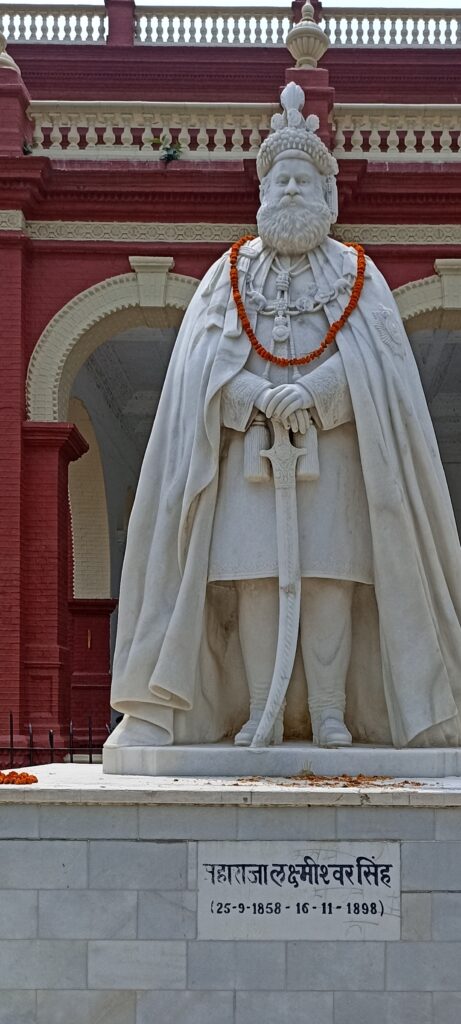
He is recognised as one of the greatest noble and philanthropist of his time. He had devoted himself to the public works. He adopted progressive and liberal approach of statesmanship. He was one of the founding members of Indian National Congress.
As a tribute to him, his statue was installed at Dalhousie Square in Calcutta in 1904. The statue had been sculpted by the eminent British sculptor E.O. Ford.
Maharajadhiraj Sir Rameshwar Singh Bahadur: Tenure 1898-1929.
He was a great scholar. Like his predecessor, he was also educated by English tutor. He had been appointed to the Indian civil service in1878.
He was also the president of All India Landholder’s Association, president of Bharat Dharm Mahamandal, Trustee of Victoria Memorial, Calcutta, president of Hindu University Society, and member of Indian Police Commission in 1902-03. He was awarded Kaiser-i-Hind medal in 1900.
Sir Kameshwar Singh: Tenure1929-1947.

Kameshwar Singh Darbhanga Sanskrit University is in his name.
His period of tenure was a transition era in the Indian subcontinent when colonial rule was going to give way to the nationalist government. A lot of constitutional reforms were being introduced and tried to explore the shape and future of an independent India.
Maharaja Sir Kameshwar Singh was president of British India Association which was the first political body of the nation of India.
At the young age of 23, he was invited to attend the Round table Conferences in London which discussed constitutional future of British India.
He remained member of Council of State(1933-46), member of Constituent Assembly(1947-50). After independence he remained member of Rajya Sabha during 1952-58 and later in 1960 till his death in 1962.
Returning Back From Campus of Kameshwar Singh Darbhanga Sanskrit University With a lot of Lessons.
No doubt, Darbhanga Kings were great visionary, having vast experience of their time, and were the men of great virtue. Present day leadership should imbibe the leadership and administrative qualities of these great kings of Darbhanga, and should emulate the passion and devotion of these kings for the betterment of their subjects.
Now it was time to return back and move to airport. But even at that moment some concrete plaque posts attracted our attention with the time tested sentences from sanskrit literature engraved on them.
One such plaque read, “Kim Kim Na Sadhyati Kalplatev Vidya.” It means, “What can’t knowledge achieve like a wish-giving tree.”
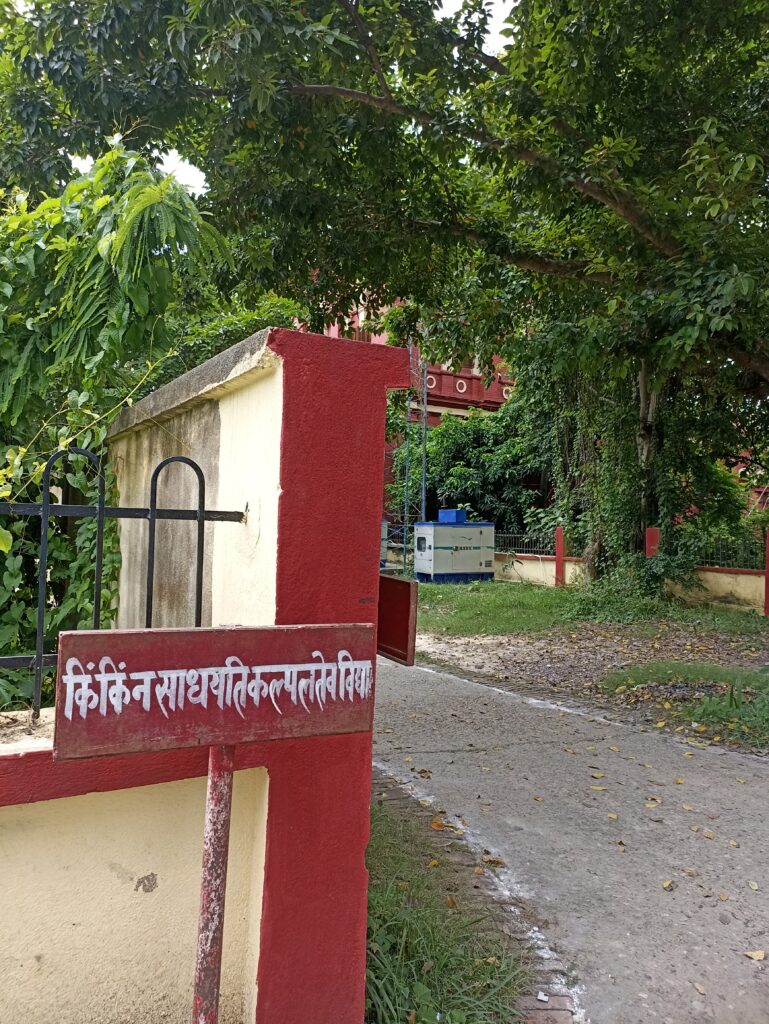
Actually this is only a part of the full stanza of Sanskrit verse. It would not be out of context to know the full meaning of this hymn about Vidya( Learning). It goes like this:
“It delights and removes depression like a wife; It brings wealth and spreads fame in all directions; What can’t knowledge achieve, like a wish-giving tree.”
Another plaque read, ” Satyam Param Dhimahi.” It says, “I meditate on Him (The Supreme Lord) for He is the absolute truth.”
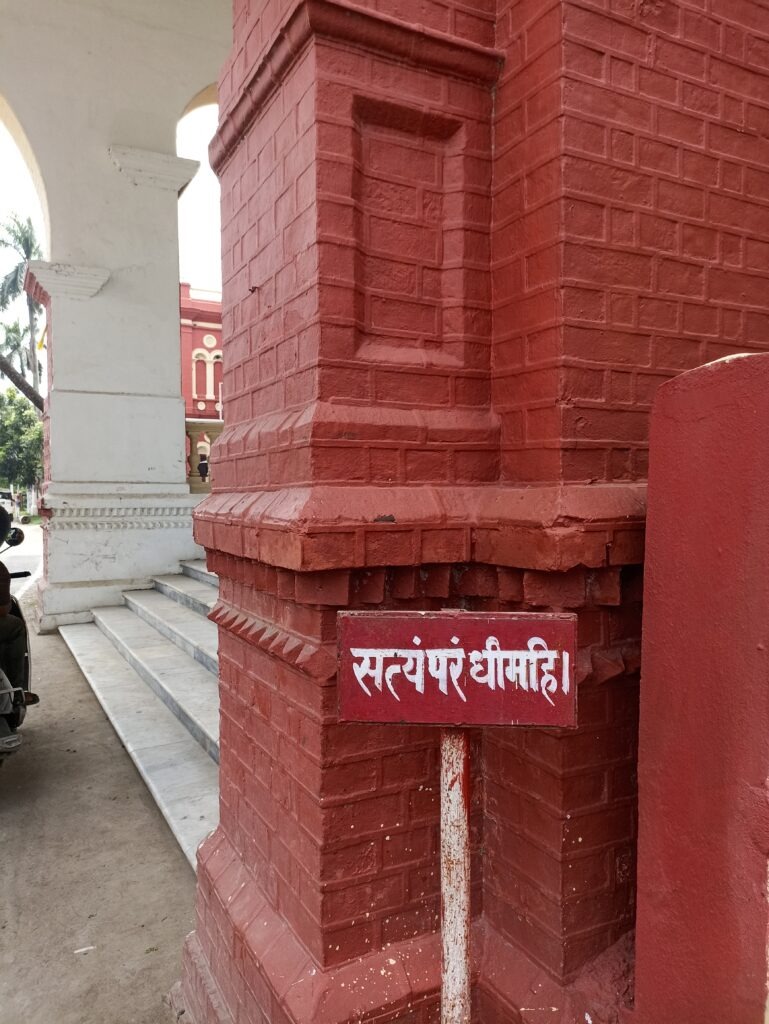
There were so many Plaque posts emitting the truth of life and wishes of welfare and talks of wisdom. Another plaques wishes the Language of Sanskrit to emerge victorious ( “Sanskritam Vijayate.”).
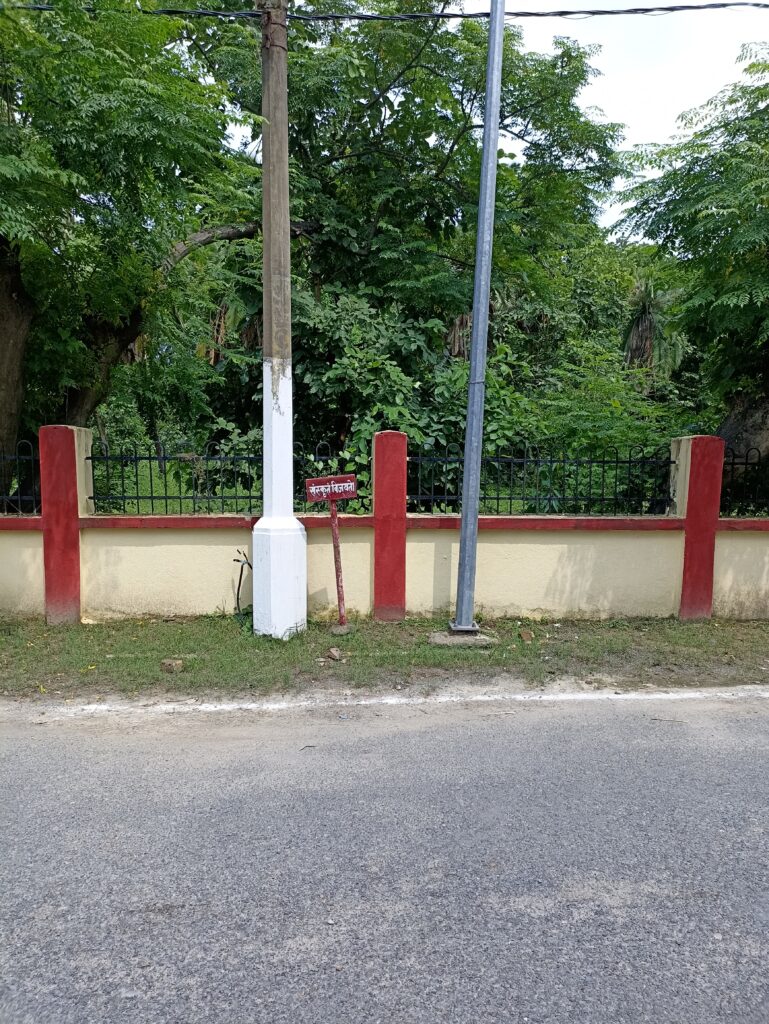
This another was also amazing. It read, ” Shraddhawan Labhate Gyanam.” This can be translated as, “One Who Is Devoted Attains Knowledge.”

Another plaque read, ” Vidvan Sarvatra Pujyate.” It means to say, ” The learned are worshipped everywhere.”
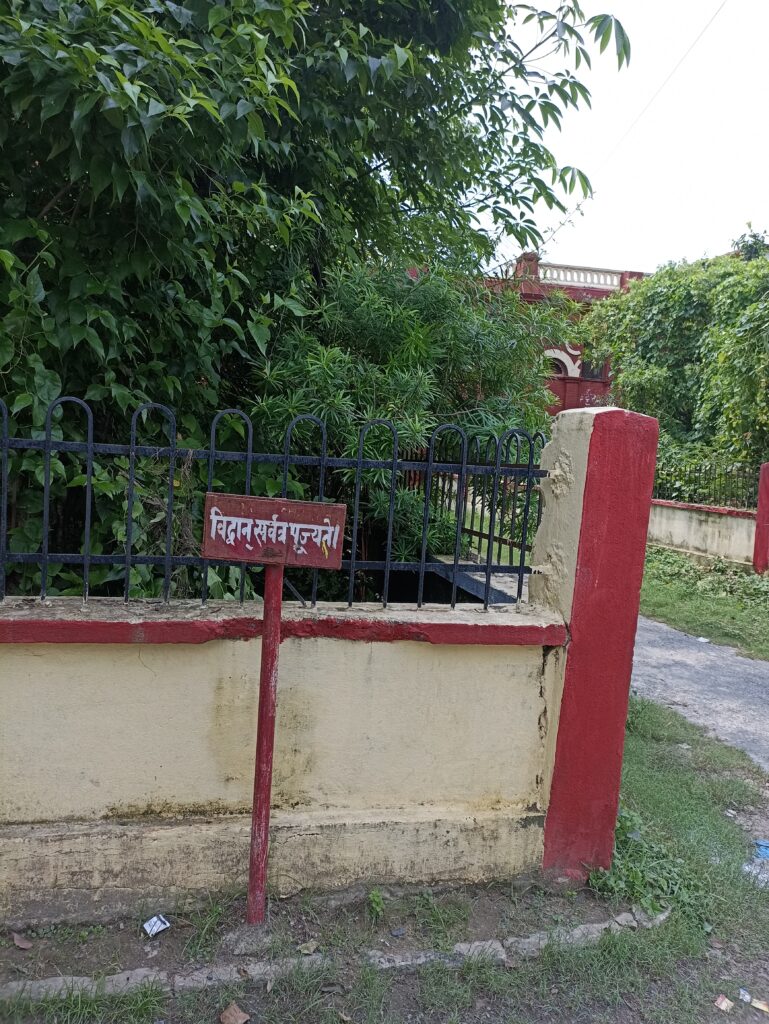
Finally, after receiving mother from airport, we were on our return journey back to home with great appreciation in our hearts for Kameshwar Singh Darbhanga Sanskrit University, Estate of Darbhanga and their magnificent kings!….. Salute!
Further reading:

